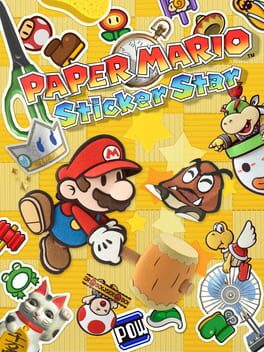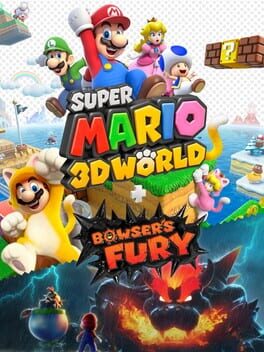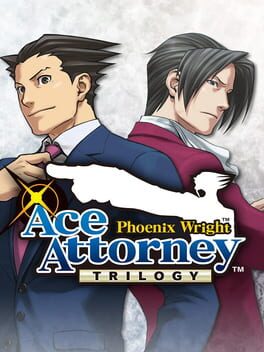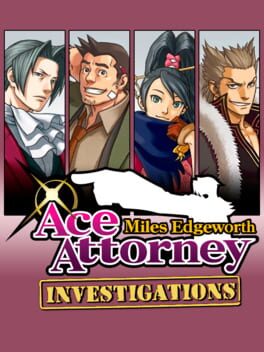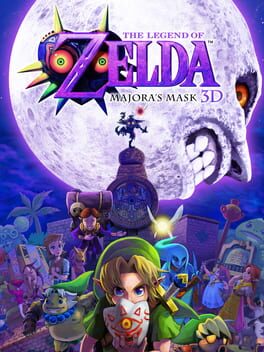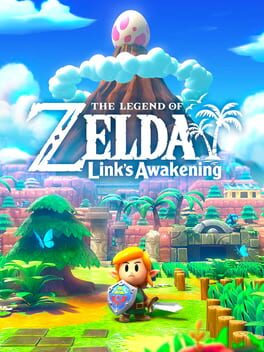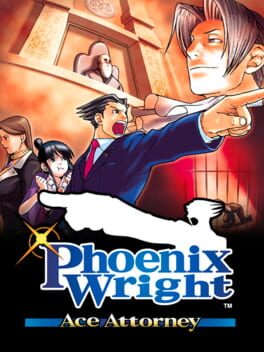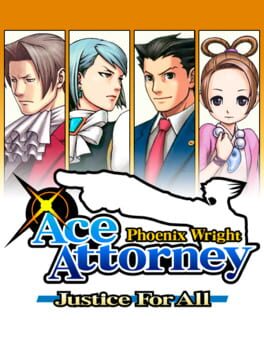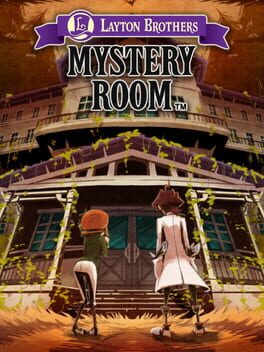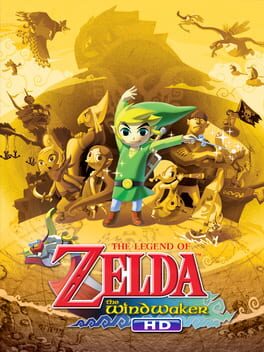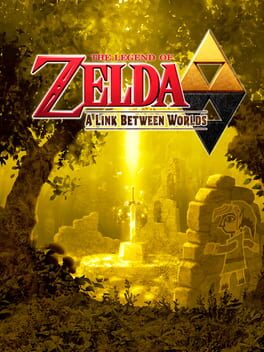Spiritofkoridai
Honestly, having not played any other Paper Marios, this game has the capability of not feeling bad to play in the moment. It is like a standard Mario platformer with more exploration and paper in some regards. It only really truly hit me how poorly the game is designed after noticing how much of the game was left after World 3.
I have my fill of the game's structure by the end of World 2, and next the game presents a massive forest labyrinth with required backtracking that destroys any sense of pacing, and then somehow anticipates the player will stomach that they're only halfway through. World 3 is a next-level playthrough killer for how many superfluous levels it introduces, all of the required items needed with no direction toward where to look for them, and centering on what is ultimately a large-scale fetch quest with very little personality on display. Further compounding the problem is the game's more inherent battle system issues, such as not having any leveling mechanics, in turn making scalability a non-factor, and the bosses demanding the most random thing stickers in order to present a reasonable challenge.
People debate all the time about how whether straightforwardly bad media is better than that which is boring, and usually I think it is a circumstantial matter. There are many different shades of bad, from being unintentionally entertaining to outright repulsive to experience; I think there are also different shades of boring that, depending on the work, allow us to be more or less charitable to the efforts of the creators regardless of our personal apathy of the thing itself. People can debate this forever, but the absolute bottom level for media in my book, however, is reserved for works that possess the deadly combination of being both long and the vapid kind of boring. I absolutely despise games that just waste my time for a billion hours without offering anything to meaningfully consider afterwards, other than that it was a bad idea to play that shit.
Nintendo had too much faith in this game's concepts to at least make the game reasonably short, and this translates into a product that asks for so much more of your attention and maintenance than it is willing to give back with substance.
I have my fill of the game's structure by the end of World 2, and next the game presents a massive forest labyrinth with required backtracking that destroys any sense of pacing, and then somehow anticipates the player will stomach that they're only halfway through. World 3 is a next-level playthrough killer for how many superfluous levels it introduces, all of the required items needed with no direction toward where to look for them, and centering on what is ultimately a large-scale fetch quest with very little personality on display. Further compounding the problem is the game's more inherent battle system issues, such as not having any leveling mechanics, in turn making scalability a non-factor, and the bosses demanding the most random thing stickers in order to present a reasonable challenge.
People debate all the time about how whether straightforwardly bad media is better than that which is boring, and usually I think it is a circumstantial matter. There are many different shades of bad, from being unintentionally entertaining to outright repulsive to experience; I think there are also different shades of boring that, depending on the work, allow us to be more or less charitable to the efforts of the creators regardless of our personal apathy of the thing itself. People can debate this forever, but the absolute bottom level for media in my book, however, is reserved for works that possess the deadly combination of being both long and the vapid kind of boring. I absolutely despise games that just waste my time for a billion hours without offering anything to meaningfully consider afterwards, other than that it was a bad idea to play that shit.
Nintendo had too much faith in this game's concepts to at least make the game reasonably short, and this translates into a product that asks for so much more of your attention and maintenance than it is willing to give back with substance.
Bowser's Fury is a neat expansion with a cool progression idea, and aside from maybe wanting a bit more from it, I don't have any meaningful complaints about the way the extra mode plays. The main game itself is not too shabby either, but I'm not particularly fond of the "3D" take on what is ultimately Mario's 2D formula.
I view the express benefit of the 3D space to be the greater ability to explore and discover as well as facilitating different kinds of objectives. Odyssey & even Bowser's Fury do this well enough, and the Galaxy games' levels have enough anti-gravity or otherwise unconventional layouts that none of it feels transparently linear in nature. 3D World by comparison feels very limited in its scope and only a marginal improvement over 3D Land when not accounting for the consistent nostalgic Mario theming. The levels can feel like they've ended as soon as they've begun, collectibles are exceedingly straightforward to find, and due to the accommodations made to support 4 players, the difficulty curve is way less steep than even 3D Land. The beautiful worlds and environments are almost wasted on levels that occasionally feel interchangeable and can only be approached and appreciated in one way -- pretty backgrounds over an equally as pretty basic straight path.
There's still plenty of fun to be had here, I've heard good things about the online play also, and Bowser's Fury at least rounds out the package well either way, but this is 3D Mario's closest analog to the New Super Mario Bros. format, and I wish there were more bold design ideas on display in general. Increasingly clear to me is the fact that most of Nintendo's ideas for Mario are recycled or re-imagined interpretations of their early gaming years, and that tactic threatens to lose its luster after so many iterations.
I view the express benefit of the 3D space to be the greater ability to explore and discover as well as facilitating different kinds of objectives. Odyssey & even Bowser's Fury do this well enough, and the Galaxy games' levels have enough anti-gravity or otherwise unconventional layouts that none of it feels transparently linear in nature. 3D World by comparison feels very limited in its scope and only a marginal improvement over 3D Land when not accounting for the consistent nostalgic Mario theming. The levels can feel like they've ended as soon as they've begun, collectibles are exceedingly straightforward to find, and due to the accommodations made to support 4 players, the difficulty curve is way less steep than even 3D Land. The beautiful worlds and environments are almost wasted on levels that occasionally feel interchangeable and can only be approached and appreciated in one way -- pretty backgrounds over an equally as pretty basic straight path.
There's still plenty of fun to be had here, I've heard good things about the online play also, and Bowser's Fury at least rounds out the package well either way, but this is 3D Mario's closest analog to the New Super Mario Bros. format, and I wish there were more bold design ideas on display in general. Increasingly clear to me is the fact that most of Nintendo's ideas for Mario are recycled or re-imagined interpretations of their early gaming years, and that tactic threatens to lose its luster after so many iterations.
A completely functional, inoffensive modern rerelease of these games that doesn’t offer enough extra. To be clear, the newer sprites and graphics are personally fine; in my mind they’re about on the same level as their DS equivalents, and compared to certain past Trilogy rereleases, this is an abject improvement stylistically in some regards. However, it’s nearly the exact same content-wise as the 3DS version aside from having more language options, meanwhile neither compilation makes much of a stellar case against emulating the DS ports as a go-to suggestion.
This one’s pretty neat :>
Investigations in Ace Attorney are normally dreadful to play, especially up to this point in the series, so it’s great that this game refocuses the typical formula in ways that are substantial. It’s maybe the only AA game up to this point that’s given an actual shit about how it feels to play, in other words. Even the worst case in either AAI game is merely fun to experience.
Kay, Gumshoe, and the final villain are all major highlights of this one for sure. It doesn’t measure up to the sequel, but the foundation being built for it here is consistently engaging enough that it’s not exactly worlds apart in quality either.
Investigations in Ace Attorney are normally dreadful to play, especially up to this point in the series, so it’s great that this game refocuses the typical formula in ways that are substantial. It’s maybe the only AA game up to this point that’s given an actual shit about how it feels to play, in other words. Even the worst case in either AAI game is merely fun to experience.
Kay, Gumshoe, and the final villain are all major highlights of this one for sure. It doesn’t measure up to the sequel, but the foundation being built for it here is consistently engaging enough that it’s not exactly worlds apart in quality either.
2007
Yes, this game is so deeply imbrued in my nostalgia that I can remember childhood friends who I visited only once who had this game on. Yes, the game being designed in such a way that doing the final Bowser level as soon as it's available leads to exponentially more comet variety for the remainder
of the game (as opposed to being spammed by purple coin missions for trying every other level out first) is not ideal. And yes, people who are attracted to Rosalina online may have Oedipus complexes.
But for all its faults, I think there's no other game that truly fills its niche in atmospheric intensity. It's a game that, even following the standard Mario plot, is able of making its small gameplay moments feel big, and its big story moments feel small. It has more to offer than the tried and true Mario-flavored fun; it does feel, to someone with fresh eyes especially, that any upcoming level could potentially have any expression imaginable, not only possessing great level design throughout but also a striking emotional core that crops up every now and again in between the playful whimsy to really draw focus on how isolated Mario is in the space he inhabits. This game's OST catches the senses in a way that elevates every component; it is so next-level in inspiring the imagination, creating impactful harsh tones for Bowser confrontations, and capturing really genuine feelings of warmth and reassurance for anything in relation to the Comet Observatory. Space Fantasy and Space Junk are both perfect melodic representations for how this game is capable of demonstrating that loneliness and tranquility can both be found in solitude.
One of the best in Nintendo's entire catalog. Not every mission is a winner, but its peaks are insane to experience, even still today.
Does anyone else remember the trading cards?
of the game (as opposed to being spammed by purple coin missions for trying every other level out first) is not ideal. And yes, people who are attracted to Rosalina online may have Oedipus complexes.
But for all its faults, I think there's no other game that truly fills its niche in atmospheric intensity. It's a game that, even following the standard Mario plot, is able of making its small gameplay moments feel big, and its big story moments feel small. It has more to offer than the tried and true Mario-flavored fun; it does feel, to someone with fresh eyes especially, that any upcoming level could potentially have any expression imaginable, not only possessing great level design throughout but also a striking emotional core that crops up every now and again in between the playful whimsy to really draw focus on how isolated Mario is in the space he inhabits. This game's OST catches the senses in a way that elevates every component; it is so next-level in inspiring the imagination, creating impactful harsh tones for Bowser confrontations, and capturing really genuine feelings of warmth and reassurance for anything in relation to the Comet Observatory. Space Fantasy and Space Junk are both perfect melodic representations for how this game is capable of demonstrating that loneliness and tranquility can both be found in solitude.
One of the best in Nintendo's entire catalog. Not every mission is a winner, but its peaks are insane to experience, even still today.
Does anyone else remember the trading cards?
Koholint Island is a land of contrasts, it seems. A good portion of the changes made for this release are inspired and take what was already good about DX and enhances its scope as well as sheer amount of content.
The best new additions include the extra collectibles: new Heart Pieces and Seashell locations are a great method that the game uses to feel fresh, and the ones that now are continually added to Mabe Village make the town a much more integrated community - as though you can always visit and relax with plenty to do. I really like the addition of more warp points to use throughout the adventure, the more detailed overworld map layout, and the reduced amount of item switching overall. If these enhancements were the game's central unique attributes, I'd raise my score above DX for sure.
That said, the game's new flaws are super apparent. Chief among them is the infamous framerate drops that thankfully don't impede actual gameplay significantly, but are still so frequent when even just walking around that it's crazy the game wasn't updated to clean that up. Sometimes decisions regarding controls can come across as a strange execution of the original concept (particularly for Turtle Rock's mechanic, which only uses a joystick and no d-pad? what lmao).
A lot has also been criticized about the new Dungeon Builder mode, and I will also do this, yes, but it has a surprising amount of presence in obtaining 100% collectibles. The fact that it replaces the Photo Quest from DX doesn't irk me at all considering that I think much of the charm of that quest is in the expressiveness of the illustrations that would likely be a contrived effort to reproduce with the current in-game models (I also find that quest's comedy to be incomprehensible at times in DX, so it's not a huge loss for me to begin with). But I am of two minds about this new mode when taken on its own and its overall integration with the quest: on one hand, the challenges provided effectively showcase the difference in priorities that developers have in comparison to users, and can provide a nice change of pace from normal exploring with how it forces you to flip your thinking under different design constraints - a different kind of puzzle. The downside to everything, though, is playing through the dungeons after arranging for the sake of completing Dampe's challenges; this takes way too much time, in combination with arranging time, for what is transparently reused content with only slight changes. This is
a mode that's easy to get consumed by rather than having you consume it, with several objectives easily taking up to at least 15-20 minutes altogether for content that is just not fun enough in practice for there to be this many rewards kept behind them all. And mind you, this is a game where most other tasks take up to 5-10 mins. max due to its streamlined nature. I'd rather tackle an original, multi-part Dampe Dungeon to get the remaining collectibles than spend time in this mode at the end of the day. I don't want to make it sound like the mode's existence in itself is a core, debilitating flaw for the game, but it's significant to mention its shortcomings since it is the most established original content the game has. Also, chamber stones are bar-none some of the most unsatisfying collectibles to get in the series given how much effort obtaining most of them require and how little tangible usefulness they actually have.
There are also some aspects of the original that are simply translated alright, like the music direction. The strengths of the original compositions are still present and intact, but what was once an actively standout positive of the GBA game is now just a consistently fine background element. The artstyle is also passable, though the toy-like look of Link and NPCs isn't translated to most enemies which, in retrospect, makes the outrage fans initially had over the look of this game look even more pointlessly directed. I even got swept up in that "controversy" myself, not having touched any version of LA. Look at how nobody's concerned about talking like they used to about this these days, like a smaller version of Windwaker's initial reception. It's all a good demonstration to me of how insidious and fleeting a good portion of community-driven Internet discourse can be, and what to better avoid when considering what I know about a topic, and how I know what I do, before jumping on bandwagons. I'd like to think I've improved at least at this much since then. There's plenty to meaningfully criticize about this game without resorting to being disingenuous or insisting it betrays the original vision for the game somehow because of its differences; it's just not always that deep.
In summary, both versions of LA I've compared remain completely appropriate ways to experience these games, and I would consider their strengths and weaknesses to generally balance each other out (would probably to default to the Switch version of the two if given the choice), but unfortunately this remake is not such an unambiguous improvement that a $60 purchase is warranted. I hope the Dungeon Builder isn't what made Nintendo charge this much for the game, as that would be an unfortunate waste. It's a better financial decision to download DX on 3DS if you can, and try that out.
The best new additions include the extra collectibles: new Heart Pieces and Seashell locations are a great method that the game uses to feel fresh, and the ones that now are continually added to Mabe Village make the town a much more integrated community - as though you can always visit and relax with plenty to do. I really like the addition of more warp points to use throughout the adventure, the more detailed overworld map layout, and the reduced amount of item switching overall. If these enhancements were the game's central unique attributes, I'd raise my score above DX for sure.
That said, the game's new flaws are super apparent. Chief among them is the infamous framerate drops that thankfully don't impede actual gameplay significantly, but are still so frequent when even just walking around that it's crazy the game wasn't updated to clean that up. Sometimes decisions regarding controls can come across as a strange execution of the original concept (particularly for Turtle Rock's mechanic, which only uses a joystick and no d-pad? what lmao).
A lot has also been criticized about the new Dungeon Builder mode, and I will also do this, yes, but it has a surprising amount of presence in obtaining 100% collectibles. The fact that it replaces the Photo Quest from DX doesn't irk me at all considering that I think much of the charm of that quest is in the expressiveness of the illustrations that would likely be a contrived effort to reproduce with the current in-game models (I also find that quest's comedy to be incomprehensible at times in DX, so it's not a huge loss for me to begin with). But I am of two minds about this new mode when taken on its own and its overall integration with the quest: on one hand, the challenges provided effectively showcase the difference in priorities that developers have in comparison to users, and can provide a nice change of pace from normal exploring with how it forces you to flip your thinking under different design constraints - a different kind of puzzle. The downside to everything, though, is playing through the dungeons after arranging for the sake of completing Dampe's challenges; this takes way too much time, in combination with arranging time, for what is transparently reused content with only slight changes. This is
a mode that's easy to get consumed by rather than having you consume it, with several objectives easily taking up to at least 15-20 minutes altogether for content that is just not fun enough in practice for there to be this many rewards kept behind them all. And mind you, this is a game where most other tasks take up to 5-10 mins. max due to its streamlined nature. I'd rather tackle an original, multi-part Dampe Dungeon to get the remaining collectibles than spend time in this mode at the end of the day. I don't want to make it sound like the mode's existence in itself is a core, debilitating flaw for the game, but it's significant to mention its shortcomings since it is the most established original content the game has. Also, chamber stones are bar-none some of the most unsatisfying collectibles to get in the series given how much effort obtaining most of them require and how little tangible usefulness they actually have.
There are also some aspects of the original that are simply translated alright, like the music direction. The strengths of the original compositions are still present and intact, but what was once an actively standout positive of the GBA game is now just a consistently fine background element. The artstyle is also passable, though the toy-like look of Link and NPCs isn't translated to most enemies which, in retrospect, makes the outrage fans initially had over the look of this game look even more pointlessly directed. I even got swept up in that "controversy" myself, not having touched any version of LA. Look at how nobody's concerned about talking like they used to about this these days, like a smaller version of Windwaker's initial reception. It's all a good demonstration to me of how insidious and fleeting a good portion of community-driven Internet discourse can be, and what to better avoid when considering what I know about a topic, and how I know what I do, before jumping on bandwagons. I'd like to think I've improved at least at this much since then. There's plenty to meaningfully criticize about this game without resorting to being disingenuous or insisting it betrays the original vision for the game somehow because of its differences; it's just not always that deep.
In summary, both versions of LA I've compared remain completely appropriate ways to experience these games, and I would consider their strengths and weaknesses to generally balance each other out (would probably to default to the Switch version of the two if given the choice), but unfortunately this remake is not such an unambiguous improvement that a $60 purchase is warranted. I hope the Dungeon Builder isn't what made Nintendo charge this much for the game, as that would be an unfortunate waste. It's a better financial decision to download DX on 3DS if you can, and try that out.
1986
I’ll be honest, I was prepared to shit on this game way more than I feel compelled to. It’s still pretty meh all things considered and does basically require a walkthrough, but I can understand more of why this would appeal to audiences of the past in a way I didn’t think was possible.
The very beginning and Dungeon 8 are the parts that stick out as just being a shitty experience all around (I’ll say this is also true with BotW in the former case though), but for the most part navigating the overworld and naturally becoming more prepared for different combat scenarios can be a suitably satisfying distraction; the general Zelda framework seen in later games is visible here under some layers of abstraction, and remains fun for a reason.
It is good that the game decides that enemies should sometimes drop bombs after being defeated to compensate for the player’s limited supply. It is bad when the game chooses to have those enemies be a hoard of Blue Darknuts that have to all be defeated to progress. This game is a land of contrasts, to be sure.
Regardless, most of the game isn’t nearly as agonizing to play as I had assumed based on the first 10 minutes or so, and that’s worth something. Maybe a whole 25 cents.
The very beginning and Dungeon 8 are the parts that stick out as just being a shitty experience all around (I’ll say this is also true with BotW in the former case though), but for the most part navigating the overworld and naturally becoming more prepared for different combat scenarios can be a suitably satisfying distraction; the general Zelda framework seen in later games is visible here under some layers of abstraction, and remains fun for a reason.
It is good that the game decides that enemies should sometimes drop bombs after being defeated to compensate for the player’s limited supply. It is bad when the game chooses to have those enemies be a hoard of Blue Darknuts that have to all be defeated to progress. This game is a land of contrasts, to be sure.
Regardless, most of the game isn’t nearly as agonizing to play as I had assumed based on the first 10 minutes or so, and that’s worth something. Maybe a whole 25 cents.
This review contains spoilers
This is a functional story that, while simplistic, is able to achieve what its story beats set out to do. The notably engaging dialogue in this entry in particular, as well as as the continually expressive animations are a notable aspect of how the series developed its cult following from the start.
It’s unfortunately underdeveloped when it comes to certain specific elements of character work and gameplay structure. For the former aspect, in comparison to his other titular contemporaries Phoenix himself is much more inconsistently portrayed as a rookie character who is only really hindered by his confidence at the game’s convenience, Mia and Maya’s story roles are arguably at their most dull and artificial, and at least the original JP release of this game has Edgeworth betray his mentor and then afterward not offer any glimpse of reflection about what he thinks about this action before he leaves the game entirely.
On the latter point, the investigations in this game don’t generally have a good sense of game design, with Turnabout Samurai being the major culprit in convincing many potential series enjoyers to drop the series entirely, and that’s not for no reason. Perhaps it’s not the best decision to have players travel from one end of the map to the other multiple times for very little reason, while they have to individually select the locations where they want to move. Outside of that, the game’s cross-examinations in the latter half of the game every so often have some sort of notably odd sticking point, even for the series in general, in a way that doesn’t feel conducive to its difficulty curve.
Essentially, it’s a fun time aside from when it’s not, which is just a bit too frequent for my liking.
It’s unfortunately underdeveloped when it comes to certain specific elements of character work and gameplay structure. For the former aspect, in comparison to his other titular contemporaries Phoenix himself is much more inconsistently portrayed as a rookie character who is only really hindered by his confidence at the game’s convenience, Mia and Maya’s story roles are arguably at their most dull and artificial, and at least the original JP release of this game has Edgeworth betray his mentor and then afterward not offer any glimpse of reflection about what he thinks about this action before he leaves the game entirely.
On the latter point, the investigations in this game don’t generally have a good sense of game design, with Turnabout Samurai being the major culprit in convincing many potential series enjoyers to drop the series entirely, and that’s not for no reason. Perhaps it’s not the best decision to have players travel from one end of the map to the other multiple times for very little reason, while they have to individually select the locations where they want to move. Outside of that, the game’s cross-examinations in the latter half of the game every so often have some sort of notably odd sticking point, even for the series in general, in a way that doesn’t feel conducive to its difficulty curve.
Essentially, it’s a fun time aside from when it’s not, which is just a bit too frequent for my liking.
This review contains spoilers
Generally, I just think this shit’s ass.
I wouldn’t say Lost Turnabout is the single worst case in the series, but it definitely demonstrates the least amount of effort put into writing one across its entire history. Turnabout Big Top has some of the more interesting character and gameplay moments from the Trilogy, but the game never possesses the attention span to focus on either its good or potentially good qualities, instead making us spend any amount of time at all with Benjamin Woodman. The second case gets overpraised because it’s surrounded by the aforementioned cases that are dogshit on either end of it, but it’s still mostly nothing to write home about with its investigations feeling particularly repetitive and just generally not having much to praise outside of its twist’s premise. It has a cliffhanger. Ok. The fourth case has insane potential for aiding Phoenix’s character and gesturing toward a more coherent series philosophy, but unfortunately bails him out too early of having to actually take the conflict seriously after it’s built itself up impressively, and the next game doesn’t care about its implications anyway. Very bizarre closer when the story obviously has an answer to the question of who Phoenix should be going after in mind, (both Maya and Edgeworth state it explicitly) but then throws the question to the player as though it’s accomplishing anything by stunting its main character’s opportunity for growth. I’m glad nothing was accomplished.
I also think this entry is the worst collection of mysteries the series has ever cooked up. Every clue that’s vital to major twists in the cast’s dialogue is bolded, underlined in red, and made the most overt it’s ever been. Moe makes Maya sneeze from pepper out of nowhere and they proceed to talk about how cool sneezing from pepper is. When Dr. Hotti (another goated addition to this generation-defining game) speaks about Ms. Miney’s face operation with Phoenix, he does so with such blatant signaling that the actual twist is that this is one of the game’s better written reveals. Outside of that metric, the type of reasoning this game consistently uses during trials is so amateurish. Arguments regularly go in circles, and these sections always feel padded out to the extreme to order to aid some of Phoenix’s more nonsensical arguments.
I think that if Farewell served as an actual turning point for Phoenix’s character that either extended into the next game or the end of this one, then I would accept the thought that case 4 makes the rest worth it, but given what is present in the case itself, I would not make an explicit recommendation for this one unless one intends on playing through the whole trilogy from start to finish. It doesn’t give the player anything to meaningfully reflect on when all is said and done.
I wouldn’t say Lost Turnabout is the single worst case in the series, but it definitely demonstrates the least amount of effort put into writing one across its entire history. Turnabout Big Top has some of the more interesting character and gameplay moments from the Trilogy, but the game never possesses the attention span to focus on either its good or potentially good qualities, instead making us spend any amount of time at all with Benjamin Woodman. The second case gets overpraised because it’s surrounded by the aforementioned cases that are dogshit on either end of it, but it’s still mostly nothing to write home about with its investigations feeling particularly repetitive and just generally not having much to praise outside of its twist’s premise. It has a cliffhanger. Ok. The fourth case has insane potential for aiding Phoenix’s character and gesturing toward a more coherent series philosophy, but unfortunately bails him out too early of having to actually take the conflict seriously after it’s built itself up impressively, and the next game doesn’t care about its implications anyway. Very bizarre closer when the story obviously has an answer to the question of who Phoenix should be going after in mind, (both Maya and Edgeworth state it explicitly) but then throws the question to the player as though it’s accomplishing anything by stunting its main character’s opportunity for growth. I’m glad nothing was accomplished.
I also think this entry is the worst collection of mysteries the series has ever cooked up. Every clue that’s vital to major twists in the cast’s dialogue is bolded, underlined in red, and made the most overt it’s ever been. Moe makes Maya sneeze from pepper out of nowhere and they proceed to talk about how cool sneezing from pepper is. When Dr. Hotti (another goated addition to this generation-defining game) speaks about Ms. Miney’s face operation with Phoenix, he does so with such blatant signaling that the actual twist is that this is one of the game’s better written reveals. Outside of that metric, the type of reasoning this game consistently uses during trials is so amateurish. Arguments regularly go in circles, and these sections always feel padded out to the extreme to order to aid some of Phoenix’s more nonsensical arguments.
I think that if Farewell served as an actual turning point for Phoenix’s character that either extended into the next game or the end of this one, then I would accept the thought that case 4 makes the rest worth it, but given what is present in the case itself, I would not make an explicit recommendation for this one unless one intends on playing through the whole trilogy from start to finish. It doesn’t give the player anything to meaningfully reflect on when all is said and done.
Cool game.
For one thing, I'm impressed that the soundtrack regularly sounds good even through the Game Boy's sound; there are plenty of talented composers who couldn't make that happen. For a game with music playing a major part in its plot and setting, it's good that it never sounds too ear-splitting in execution (it may get close occasionally, but oh well).
For the most part, it's a cute little treat that only has a few minor hiccups that crop up now and again. It feels like a bite-sized Zelda in every aspect, which strikes a chord because of how focused and captivating its exploration options are in spite of, or maybe partly because, of its limitations. A lot of creativity and surreal aspects are included to appropriately distinguish itself from past and future titles. I initially wasn't convinced that 2D Zelda as a format would have the same pull that I've experienced with the more impressive 3D titles, but I'm now more receptive to this kind of game's strengths and how the differences in map structure makes traversal in 2D more streamlined.
There were distinct moments where a boss or two would be mechanically frustrating to contend with, but those encounters only really stick out because it is just those few that brought the pace of the game to a halt for questionable design reasons.
Having also played the 2019 release recently, this game's overworld, dungeon and story design still definitely manage to endure the test of time at giving exactly enough depth to be satisfying to play and left me with some extremely memorable ideas for a Zelda title.
For one thing, I'm impressed that the soundtrack regularly sounds good even through the Game Boy's sound; there are plenty of talented composers who couldn't make that happen. For a game with music playing a major part in its plot and setting, it's good that it never sounds too ear-splitting in execution (it may get close occasionally, but oh well).
For the most part, it's a cute little treat that only has a few minor hiccups that crop up now and again. It feels like a bite-sized Zelda in every aspect, which strikes a chord because of how focused and captivating its exploration options are in spite of, or maybe partly because, of its limitations. A lot of creativity and surreal aspects are included to appropriately distinguish itself from past and future titles. I initially wasn't convinced that 2D Zelda as a format would have the same pull that I've experienced with the more impressive 3D titles, but I'm now more receptive to this kind of game's strengths and how the differences in map structure makes traversal in 2D more streamlined.
There were distinct moments where a boss or two would be mechanically frustrating to contend with, but those encounters only really stick out because it is just those few that brought the pace of the game to a halt for questionable design reasons.
Having also played the 2019 release recently, this game's overworld, dungeon and story design still definitely manage to endure the test of time at giving exactly enough depth to be satisfying to play and left me with some extremely memorable ideas for a Zelda title.
This review contains spoilers
The ending cutscene is kind of insane, and almost convinced me to raise the game's score as a whole, great resolution.
However, I think most of the game outside of that is simply serviceable and its most original aspects, such as Link's wall traversal, are integrated well enough, but doesn't become more fun to do over regular exploring. The majority of the story feels very Nintendo-Directcore, for lack of a better phrase. The game's elevator-pitch gimmick revolves around paintings, and so the story will bend over backwards to make mention of the topic whenever possible regardless of the fact that it clearly services the gameplay above any particular story element.
And while I also respect the attempt to change up the item system with Ravio's trading system, but this just resulted in me grinding rupees as soon as I was able in order to actually own the items by and the dungeons just felt like they became a tolerable kind of busywork thereafter. I think a crucial aspect of the series' previous dungeons appeal is the setup and payoff of having to intuit when you'll have to use an item you don't have yet, and then solving previous rooms you've visited when you do. With the new system in place, it makes problem-solving more streamlined and I was less engaged in most of the game's puzzles as a result. It's cool that bombs and arrows are on a cooldown now though, that was nice of them.
Other than what I've outlined, it's fine and enjoyable most of the time, but it mostly doesn't stimulate me beyond the typical fun that's commonplace in Zelda.
What was with that Octo-Baseball minigame?
However, I think most of the game outside of that is simply serviceable and its most original aspects, such as Link's wall traversal, are integrated well enough, but doesn't become more fun to do over regular exploring. The majority of the story feels very Nintendo-Directcore, for lack of a better phrase. The game's elevator-pitch gimmick revolves around paintings, and so the story will bend over backwards to make mention of the topic whenever possible regardless of the fact that it clearly services the gameplay above any particular story element.
And while I also respect the attempt to change up the item system with Ravio's trading system, but this just resulted in me grinding rupees as soon as I was able in order to actually own the items by and the dungeons just felt like they became a tolerable kind of busywork thereafter. I think a crucial aspect of the series' previous dungeons appeal is the setup and payoff of having to intuit when you'll have to use an item you don't have yet, and then solving previous rooms you've visited when you do. With the new system in place, it makes problem-solving more streamlined and I was less engaged in most of the game's puzzles as a result. It's cool that bombs and arrows are on a cooldown now though, that was nice of them.
Other than what I've outlined, it's fine and enjoyable most of the time, but it mostly doesn't stimulate me beyond the typical fun that's commonplace in Zelda.
What was with that Octo-Baseball minigame?
